February 6, 2022
Less than a day in Lima and we already were taken by it. Lima’s not really exotic, but it still has a foreign feel–though maybe more of a European than developing country feel, at least in the areas we’d seen in our brief introduction to the city so far. It was clean and well laid out, the streets were wide and tree-lined and the climate in the summer was perfect. Highs were in the 70s and lows in the 60s with partly cloudy skies, though cooler near the water.
Lima is a very large city with a population of nearly 10 million people, bigger than Los Angeles or New York City and, like those cities, it’s broken up into sections. The Miraflores section where we were staying is by the ocean, though it wasn’t nearly as posh and expensive as an oceanfront U.S. city would be.
We woke up early and decided to take a morning walk along the nearby oceanfront path. Once again, we were reminded of Southern California as we gazed out over flower-covered cliffs leading down to the sea. The soft views, lack of people, and gentle breeze off the ocean were soothing for the soul and provided a perfect start to the day.
Our mood shifted a bit by something we came across en route back to our inn. We passed a building surrounded by a metal fence covered with hundreds of black and white signs. We crossed the street to check it out and as we came closer, we realized what it was. The building was the Medical College of Peru and the posters were a memorial to the alumni doctors who’d died of Covid. Not too surprisingly, from what we could tell all the faces were men. The memorial was a somber reminder of the incredible toll Covid had taken in Peru, particularly among medical personnel and it gave us perspective on the rationale for Peru’s strict double mask and triple vaccine requirements.
When we arrived back at the inn we were a little early yet for breakfast (as in Colombia, Peruvians likewise start their day later than we’re used to), so we relaxed on the outside patio awhile. Afterwards, we were served a top-notch, multi-course breakfast with excellent coffee.
The owner came by and sat at our table for a while to provide us with a local map and lots of great suggestions about things to do during our stay in Lima. Susan took lots of notes, both mental and written, that would come in handy throughout our stay.
After breakfast, we walked along the wide central avenue in Miraflores. The road had been cordoned off to vehicles to accommodate a speed walking race, making for an even more pleasant stroll. Soon, we turned onto another large, tree-lined thoroughfare that also was closed to traffic. It was Sunday and, as we learned, on Sundays only bicycles and pedestrians were allowed on that road even though there was a wide walkway in the middle.
The streets were clean and the whole area felt very safe. With so many locals speed walking, riding bikes and enjoying other outdoor activities we felt even more like we could have been in Southern California. But here, the signs were in Spanish and the prices were much lower.
We wandered through the locally famous Cat Park where roaming cats live, apparently cared for by the local government. In addition to cats, there were giant colorful sculptures and dozens of artists had set up to sell their pieces. We wished we had room to bring some back with us.
We browsed through dozens of stalls at the massive and colorful Inca artisan market. The market stretched for a few blocks with offerings ranging from traditional alpaca textiles, to handcrafted jewelry, to art, to musical instruments, Pisco liquor, and more.
A few hours and a weighted-down backpack later, we continued through the central square where we took a break on a park bench to watch some sort of celebration that was going on at the large Catholic Church there. There was a marching band, confetti, and masked nuns. We had no idea what it was.
We slowly started heading back toward our inn, passing multiple massive murals and unusual, colorful buildings. We stopped along the way at a recommended place for a light lunch and split an exceptional tomato soup and chicken sandwich on artisanal bread for about US $5.00. The food in Lima so far had been outstanding. We’d hoped to visit Central Restaurante, considered the finest in all of South America and rated as the fourth best restaurant in the world but reservations were weeks out. Just as well, as the 14-course meal with wine pairings for two would’ve almost paid our airfare home—though the cost was still only a fraction of what such a meal would have cost in the states.
After dropping off our purchases and a brief rest at our inn (we’d grown accustomed to the whole siesta thing while in the Amazon), we took a late afternoon walk to the nearby Barranco district, an edgier/bohemian section known for street art. We began by walking along the road that paralleled the sea, then crossed over a highway, and then continued for another mile or two into the heart of the Barranco . We were glad we’d rested first.
Once we reached Barranco, we were in an area of tree-lined roads with older buildings leading up to the sea, lots of street art, and a shopping/dining area bustling with locals and probably some tourists, though we heard no English. As a sign informed us, this was an area known as well for writers and poets as well as visual artists.
We crossed over a bridge into the heart of the area, then veered off into a hilly area dominated by a large gorge that led to the sea. At the bottom was a narrow road and restaurants climbed up the sides of the gorge. From a vantage point along the edge, we watched hundreds of sunbathers enjoying a sunny Sunday at the beach.
Crossing the gorge near the middle was the Sigh Bridge. Local custom was to make a wish, hold your breath, make it across the bridge without exhaling, and then your wish would come true. The bridge was crowded with people walking slowly and stopping to take in the view, but we both maneuvered around them and made it across in one breath.
On the other side of the Sigh Bridge was a large old dilapidated church. Its walls were crumbing and the roof was caving in and at one time it must have been impressive. There was a sign nearby describing it but it wasn’t clear why it was allowed to decay. In front, a musical duo entertained the passersby.
In this artsy section of Lima, there were nearly as many murals as there were people. Some were enormous.
The proprietor of our B&B had suggested a place to go near the Bridge of Sighs that made piconares—donuts—and we eventually found it. Odd-shaped pieces of fried dough came to the table swimming in a honey syrup. They were delicious.
Rounding out the Barranco neighborhood, we walked around the pretty central square, landscaped with flowers and several statues.
We decided we didn’t need dinner, as we’d been eating a bit too much. Instead, on the way back to our inn we stopped and picked up some light snacks.
Back at the room, our watches said we’d walked 10 miles. I could feel it in my still-sore neck but it was worth it to see as much of Lima as we had. We only had one more full day in the the city and we wanted to absorb as much of it as possible.

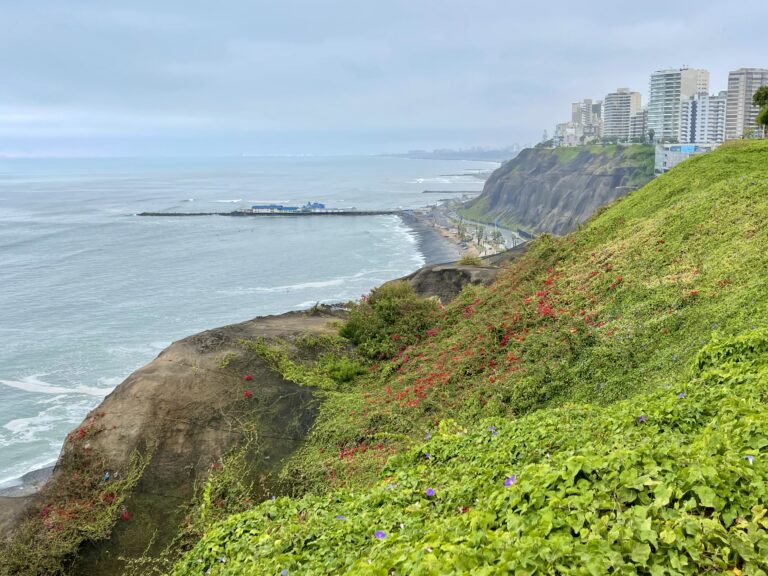
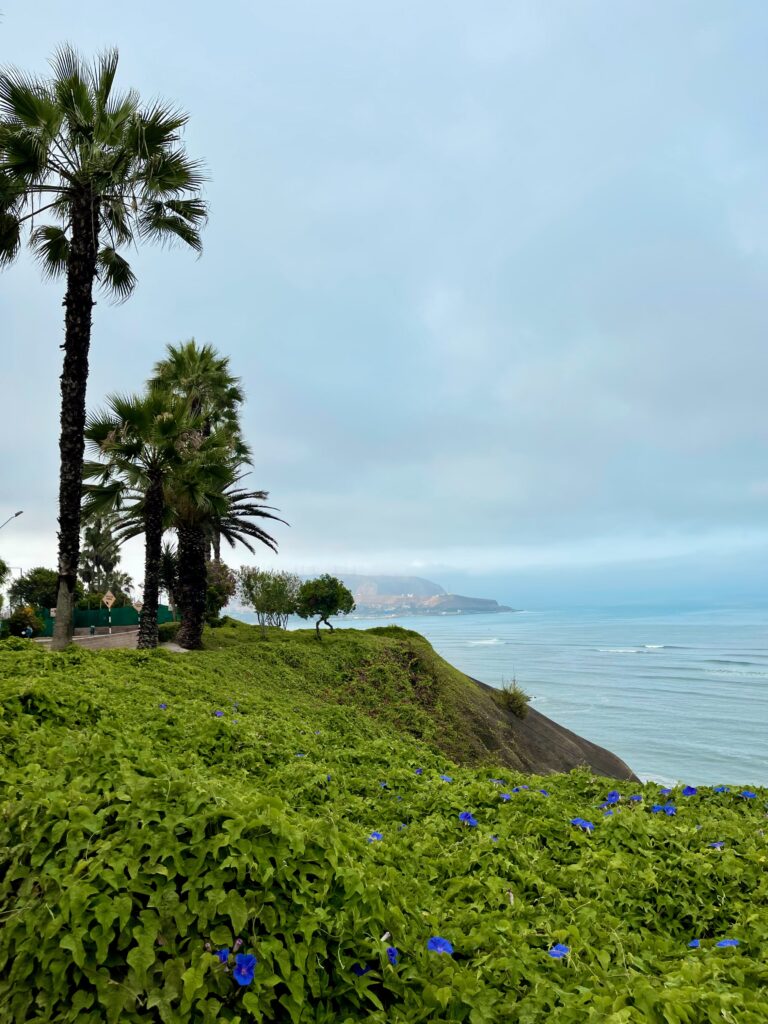
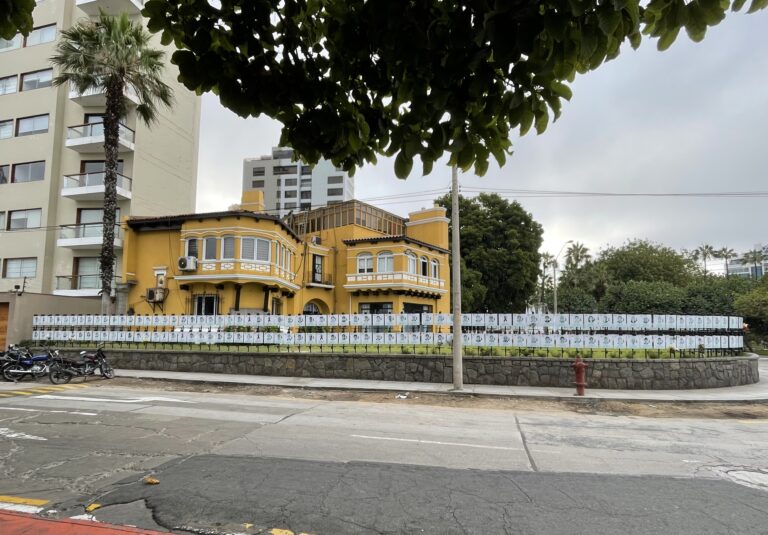
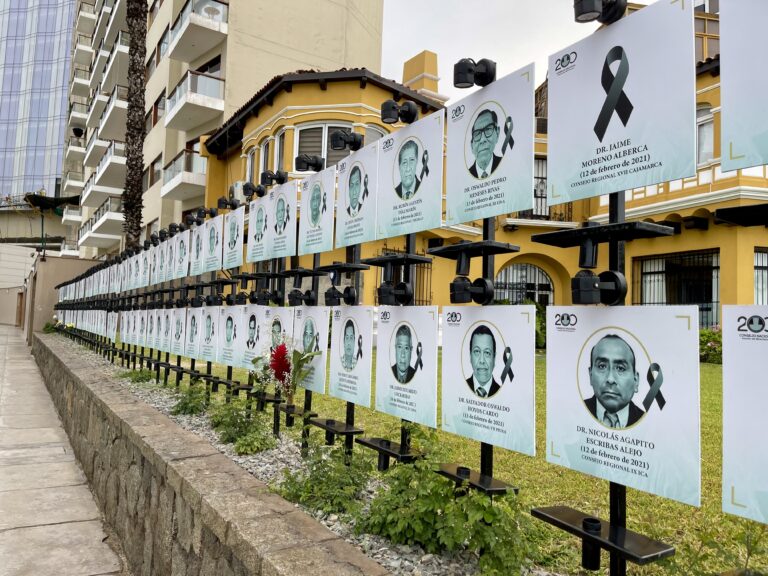
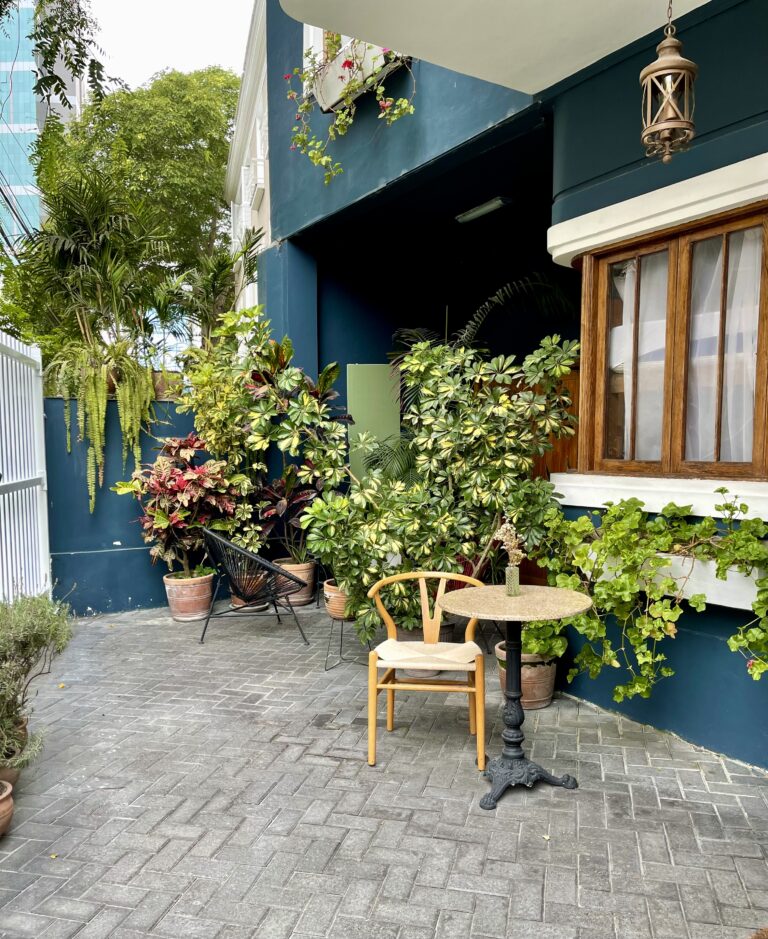
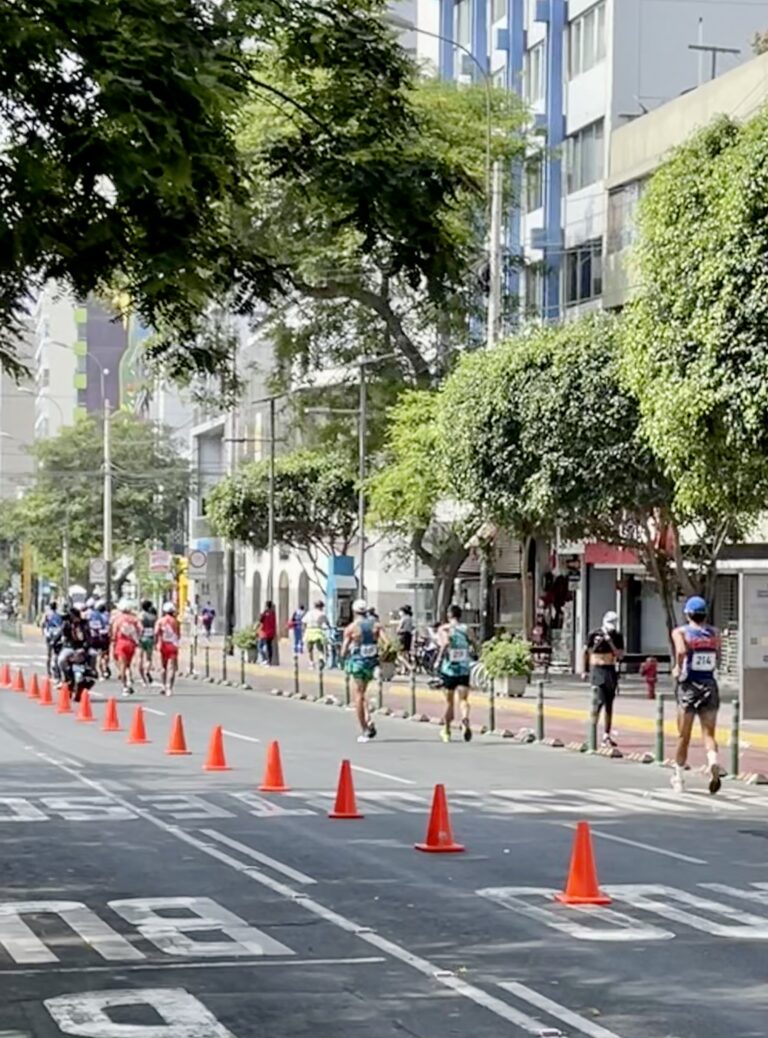
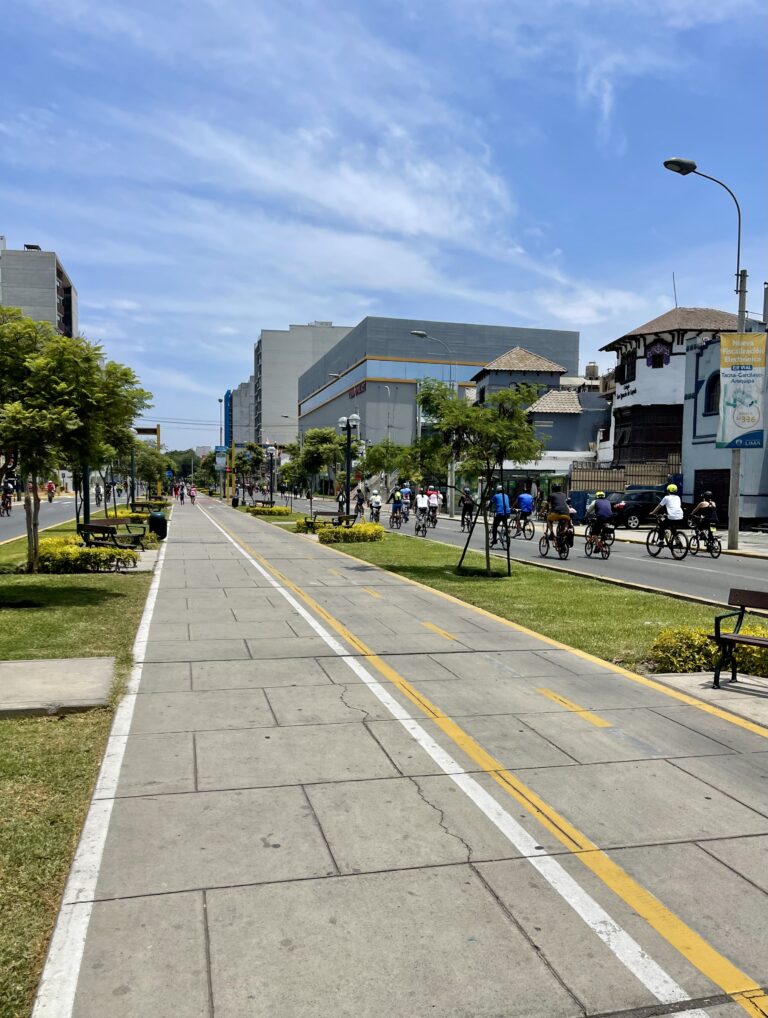
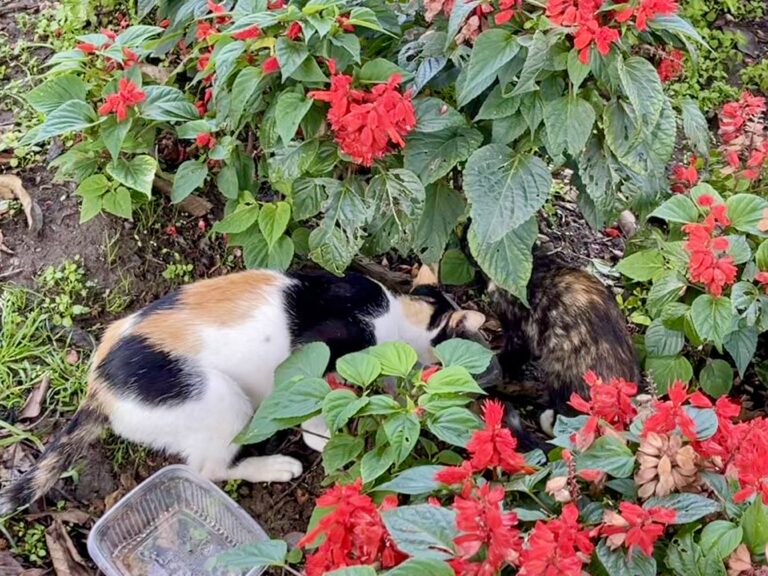
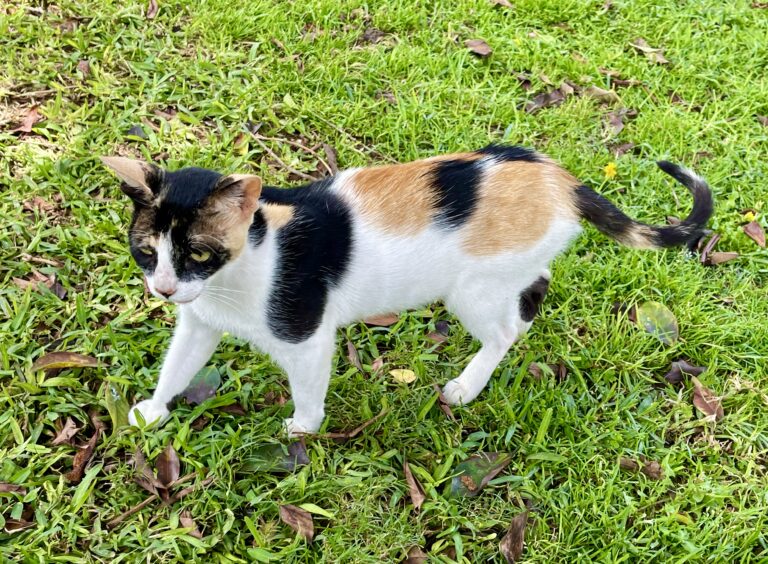
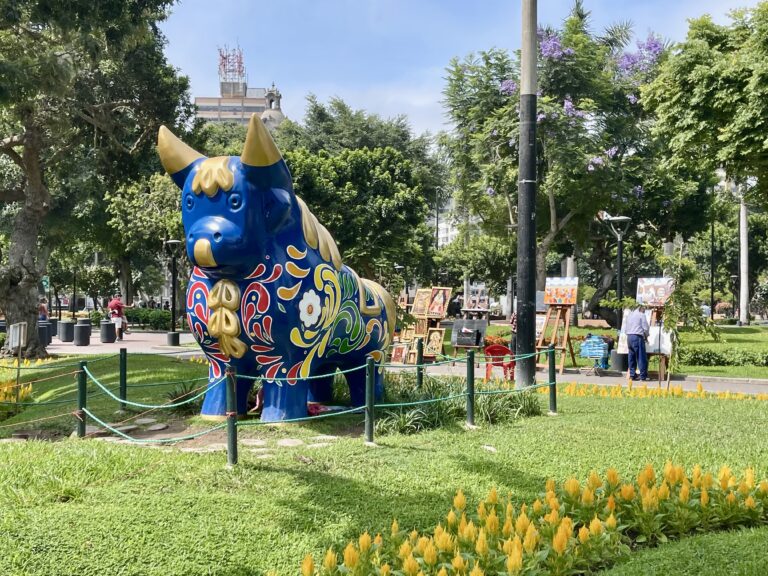
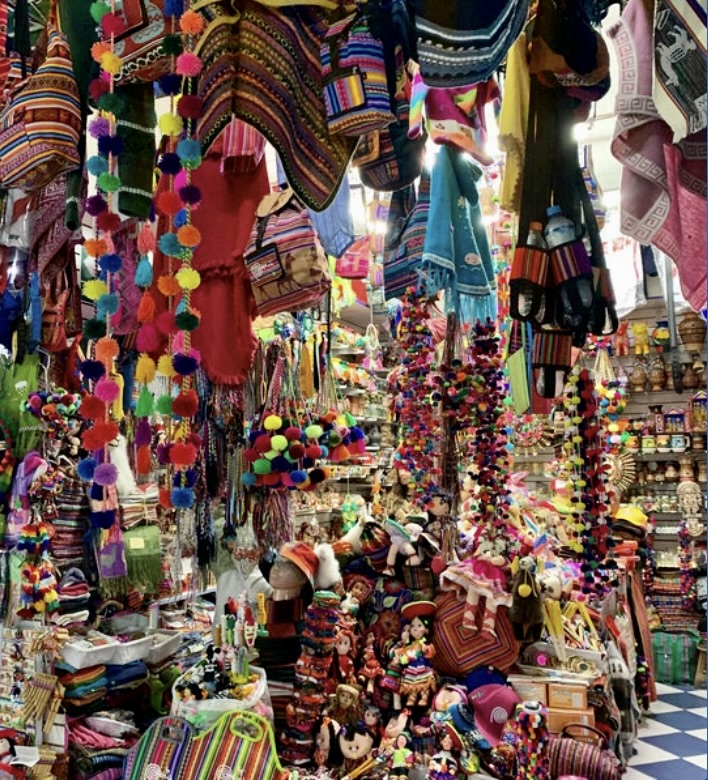
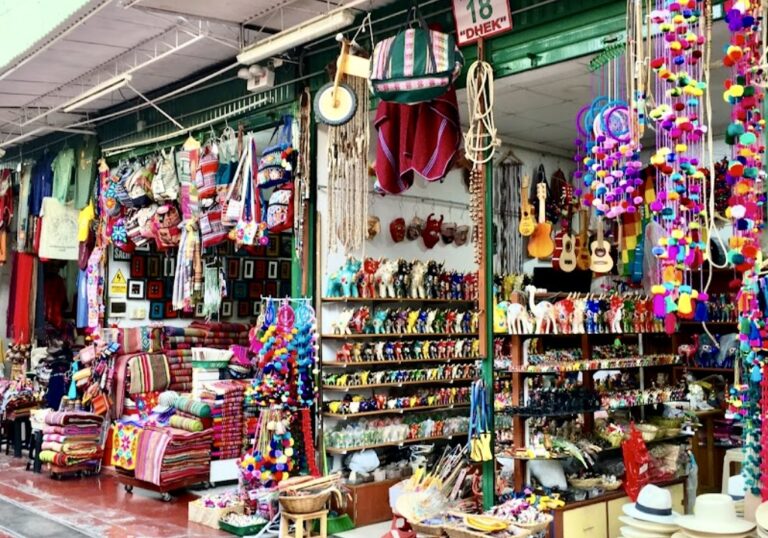
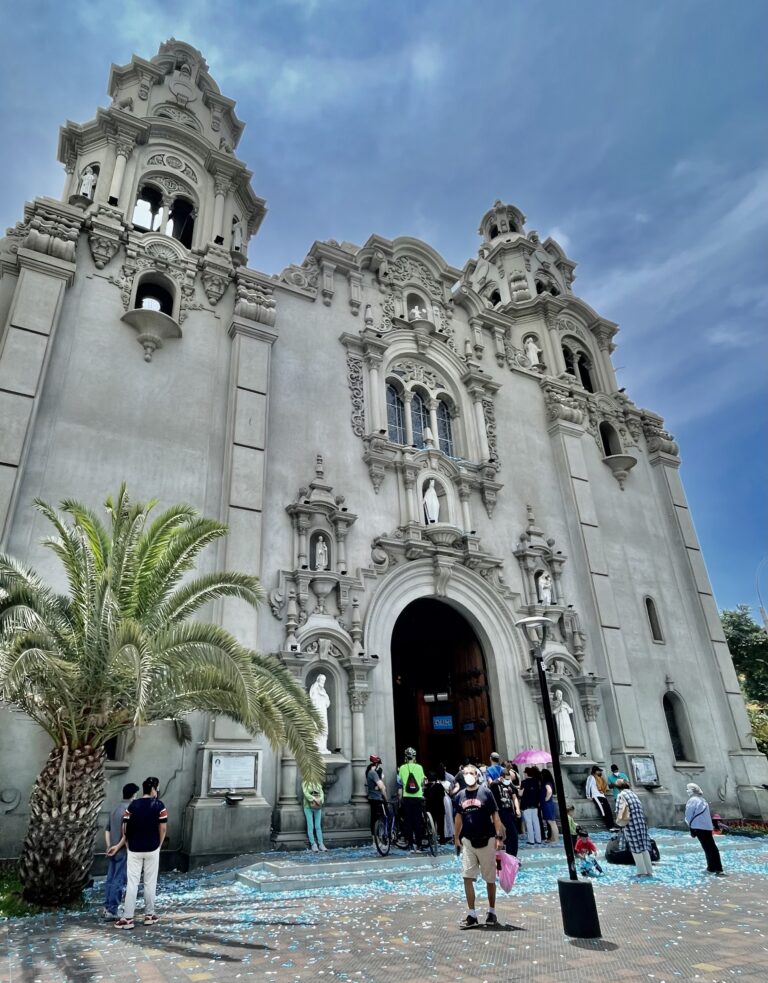
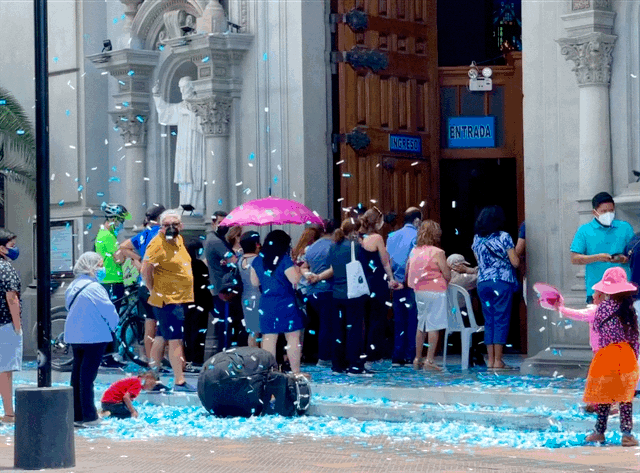
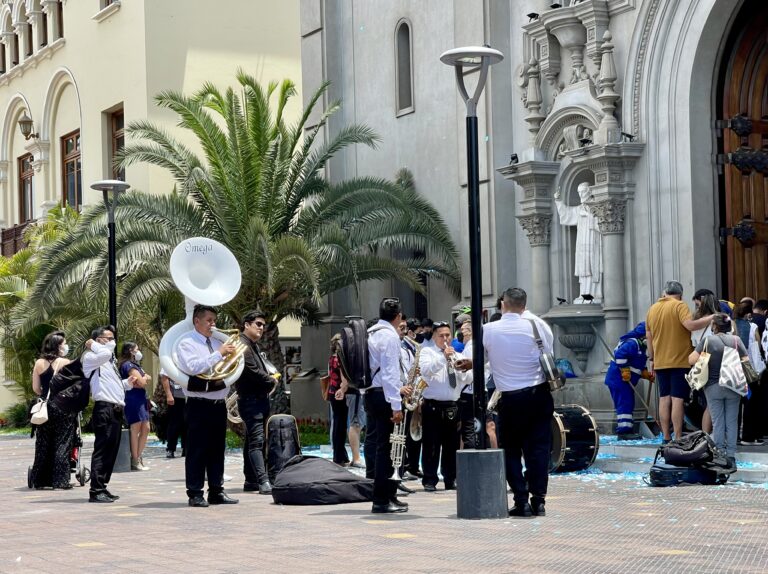
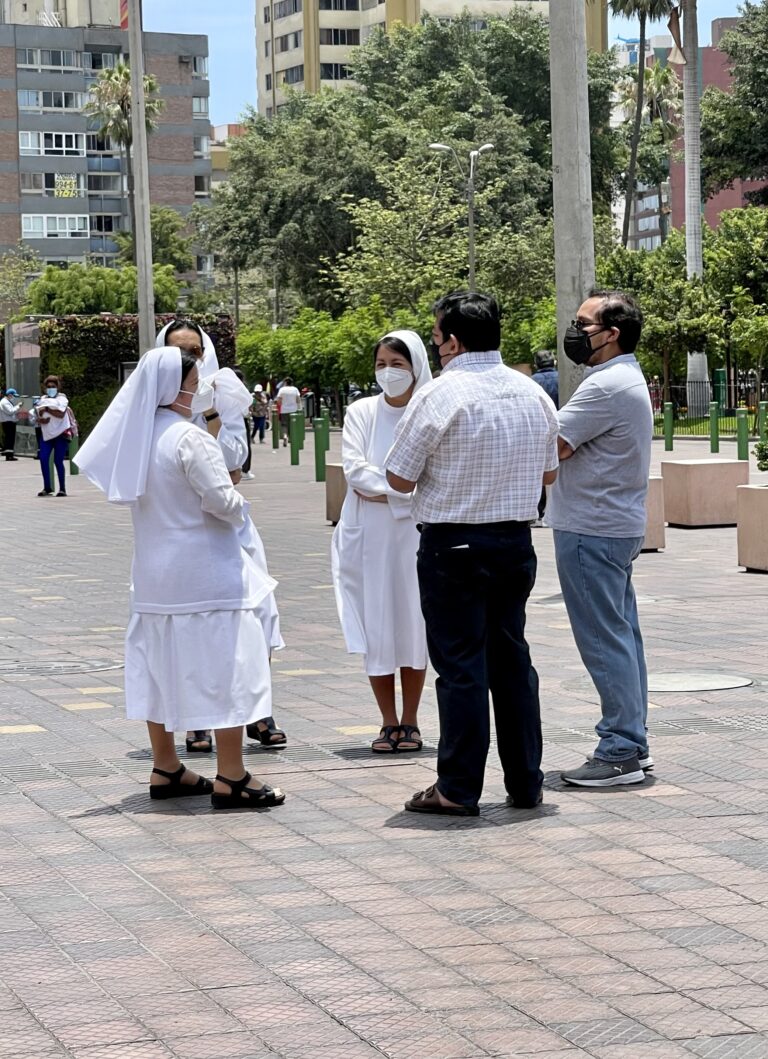
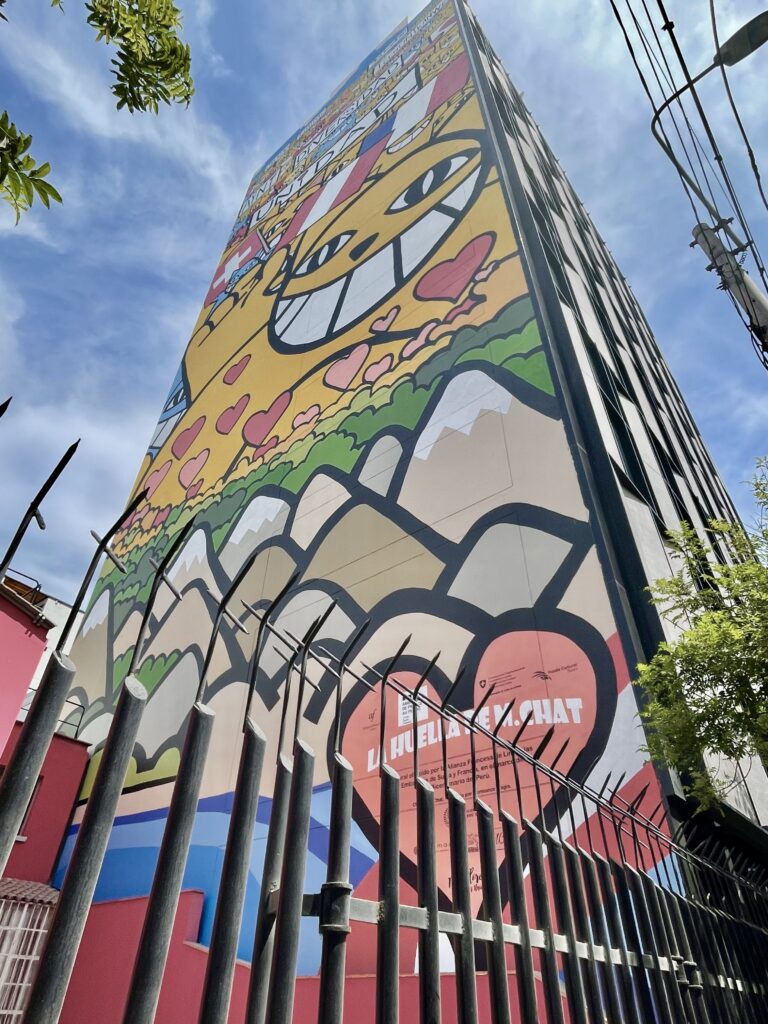
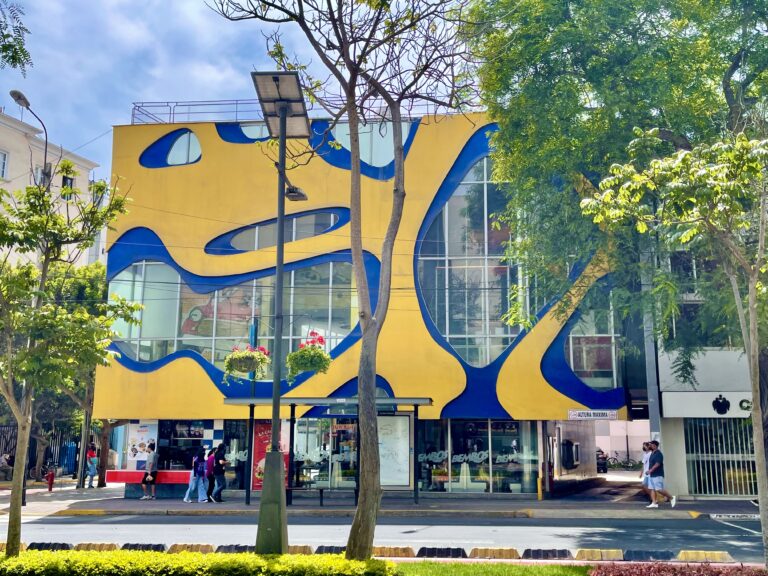
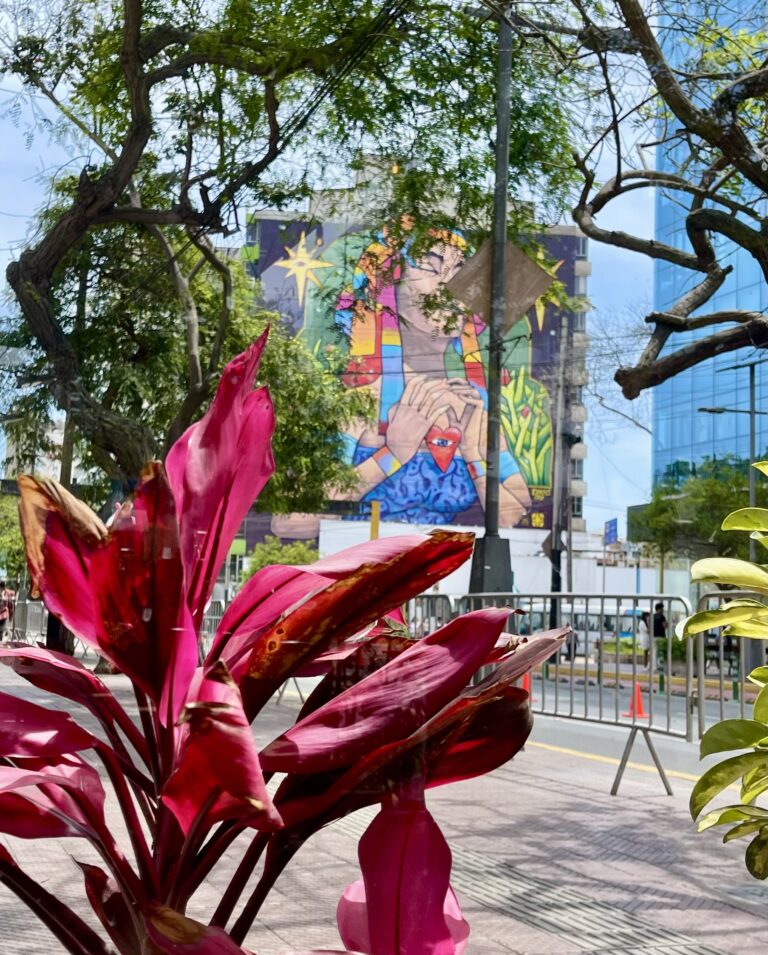
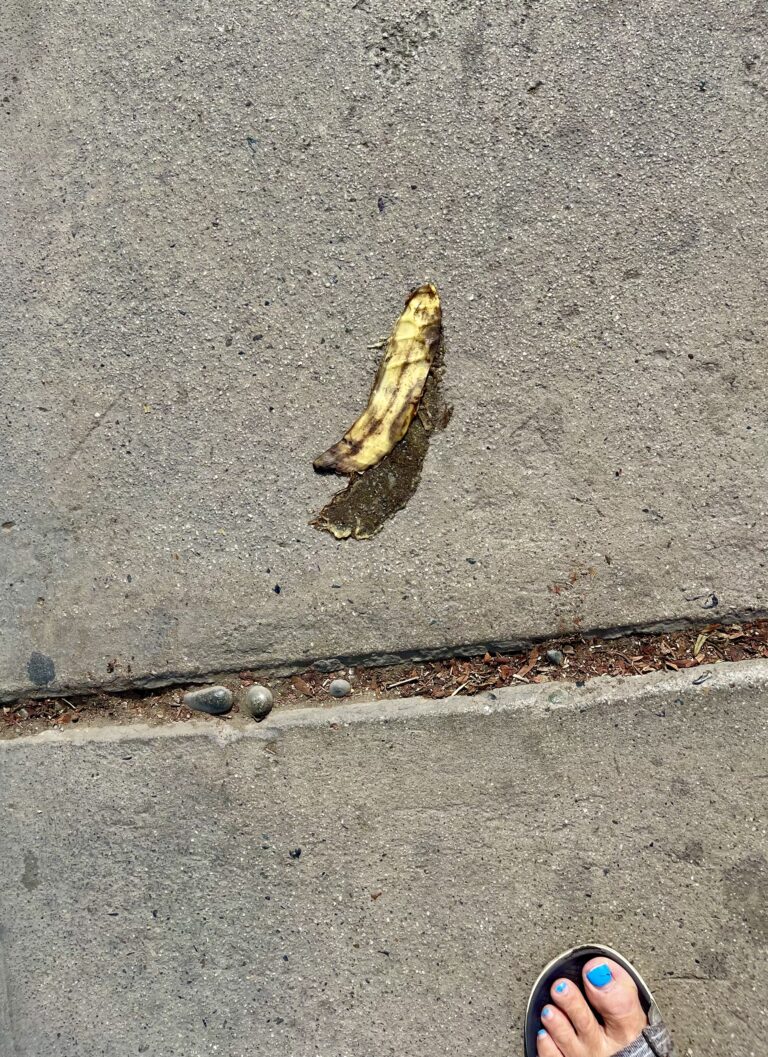
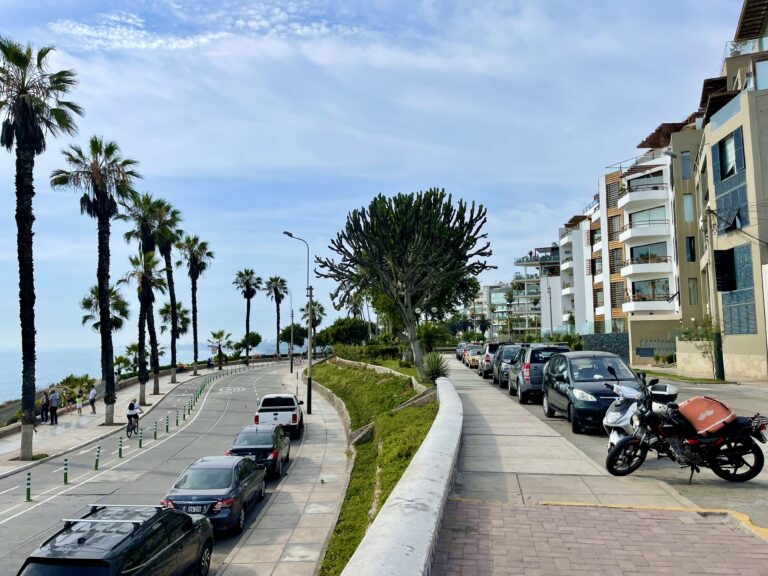
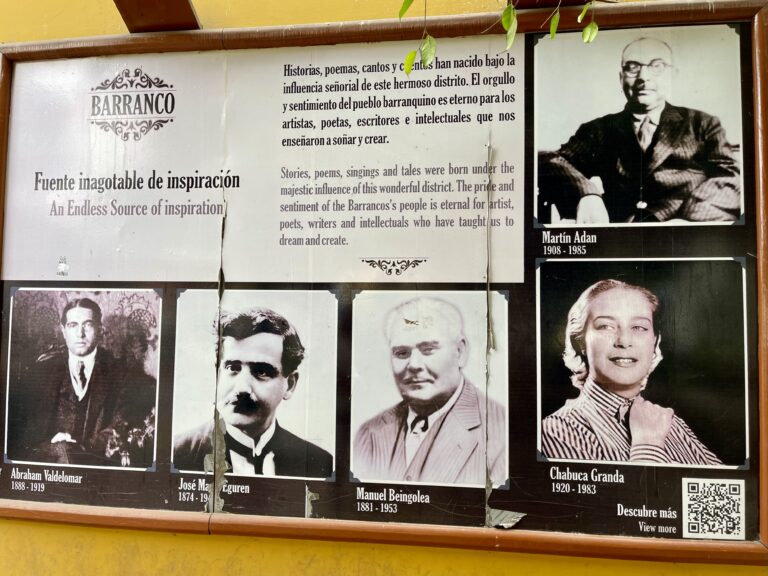
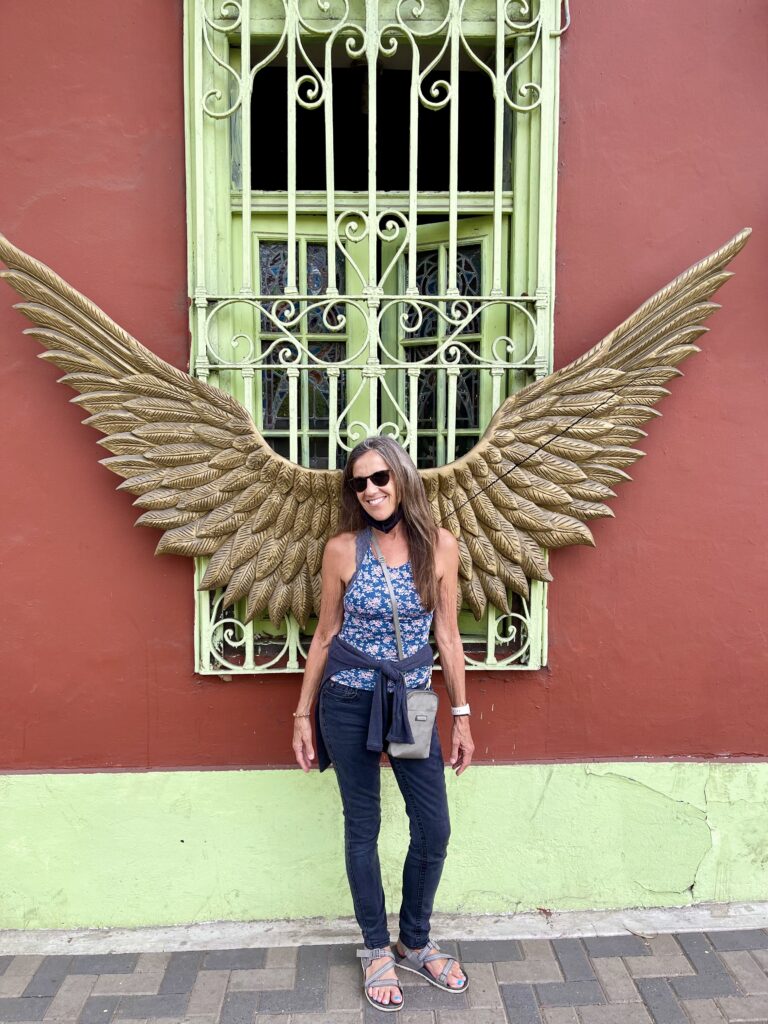
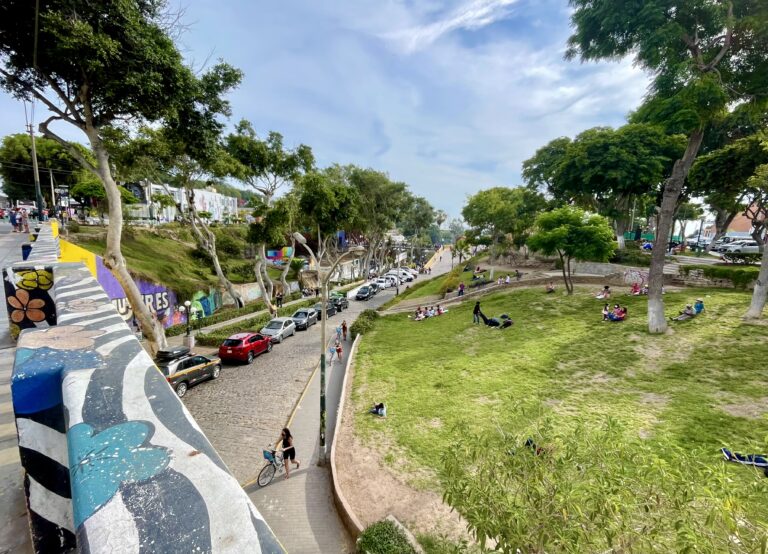
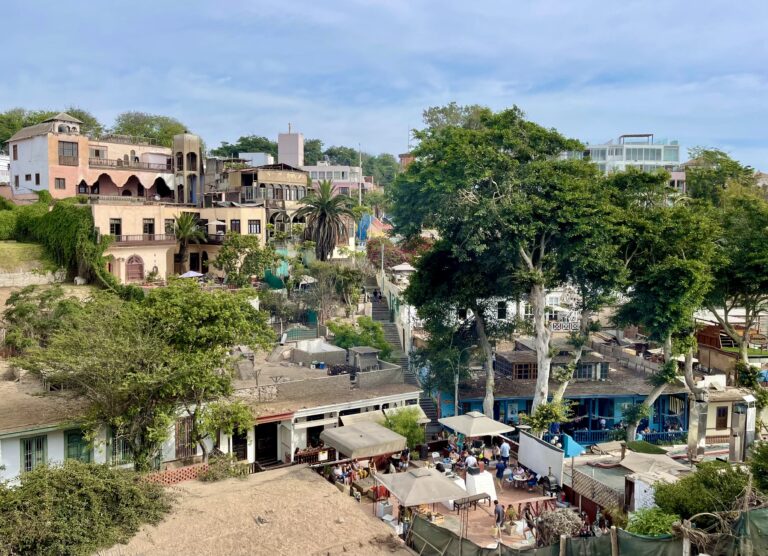
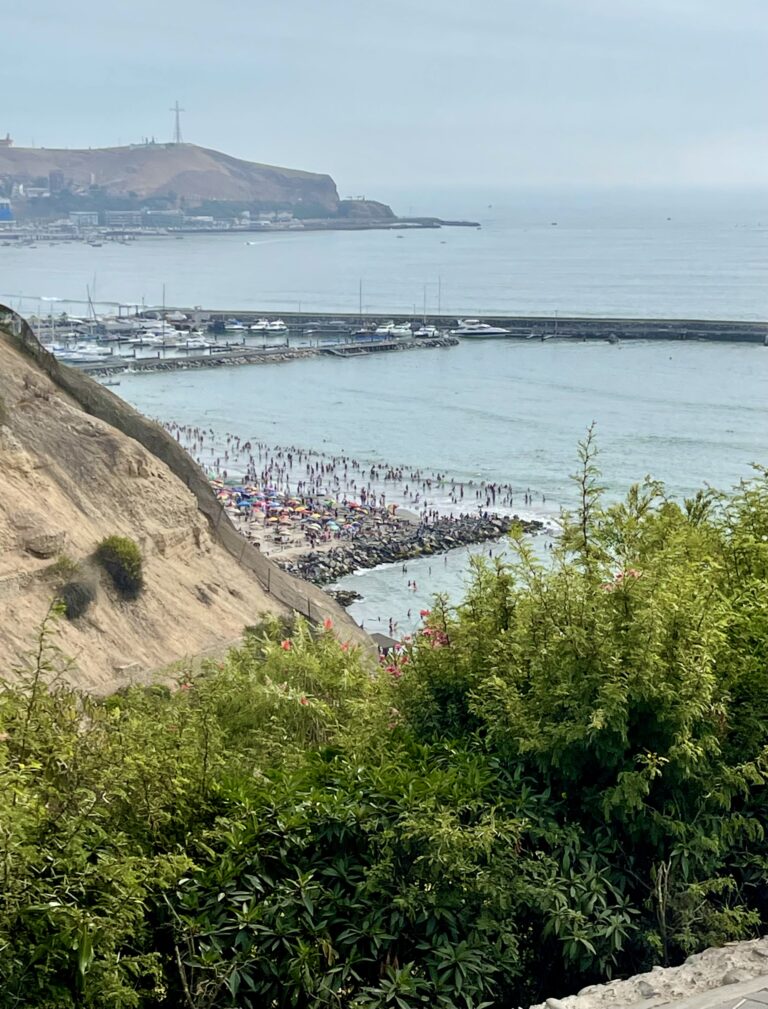
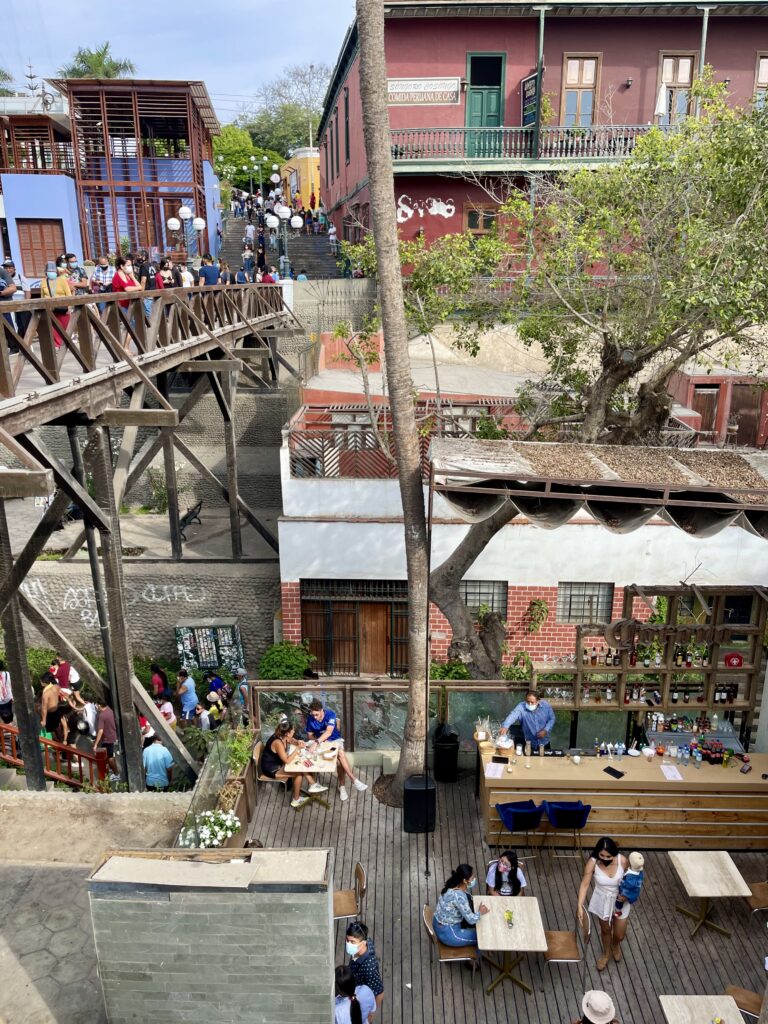
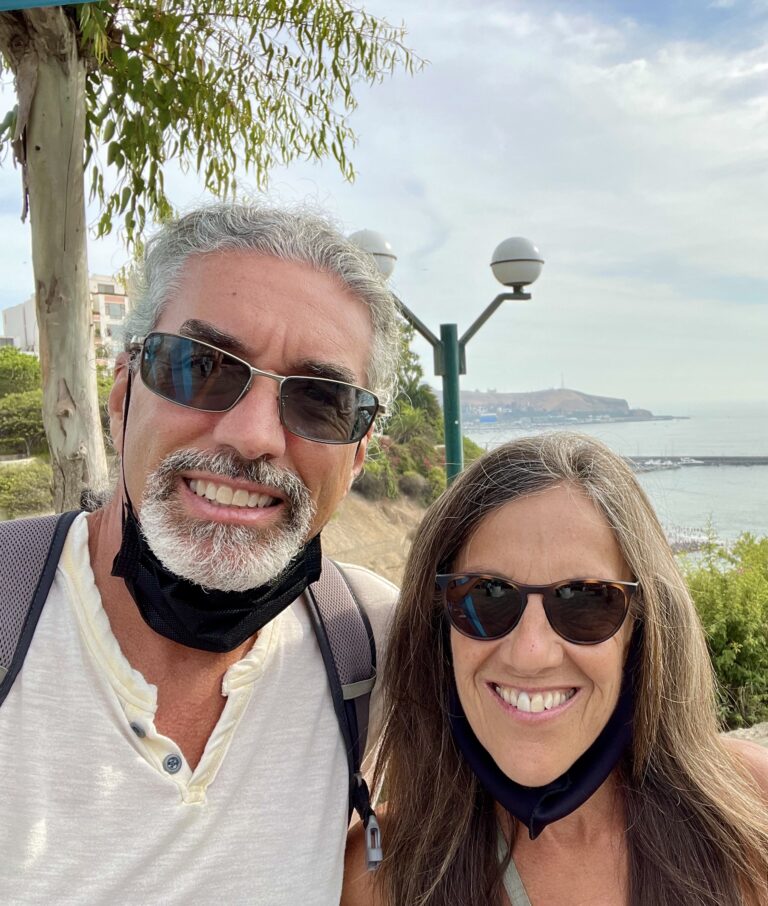
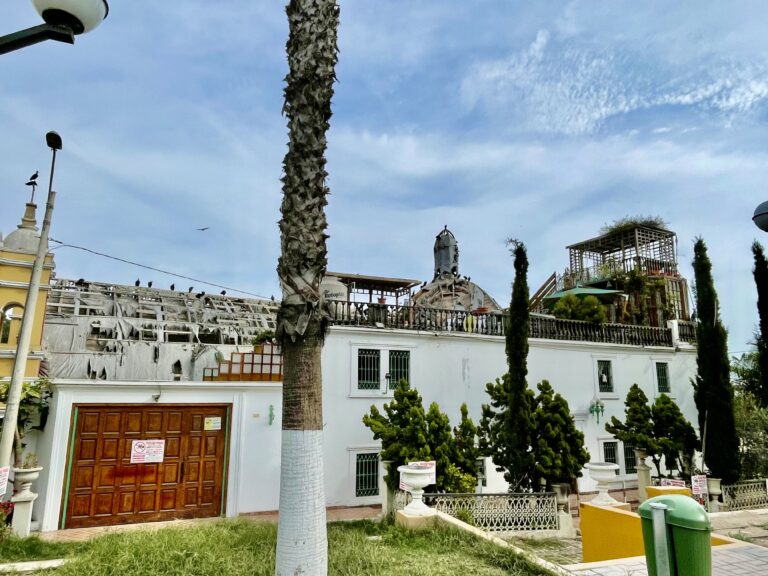
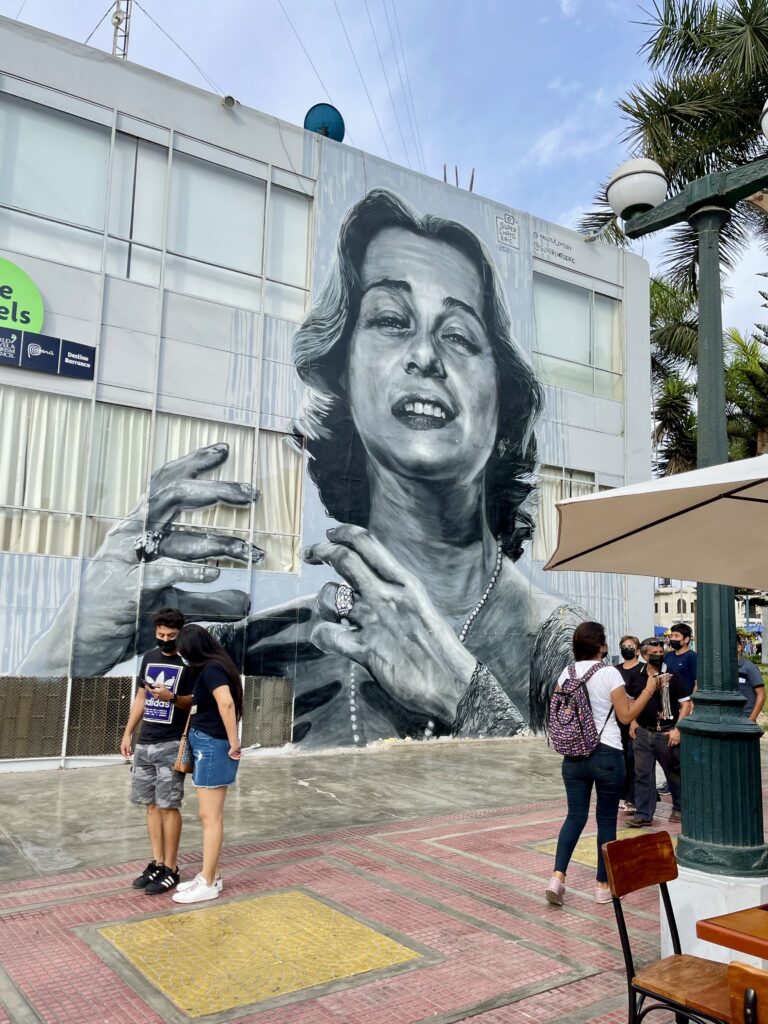
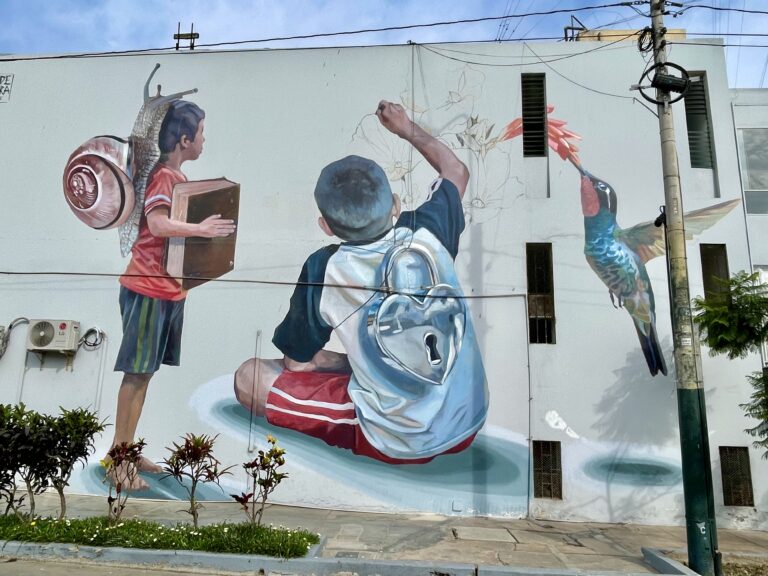
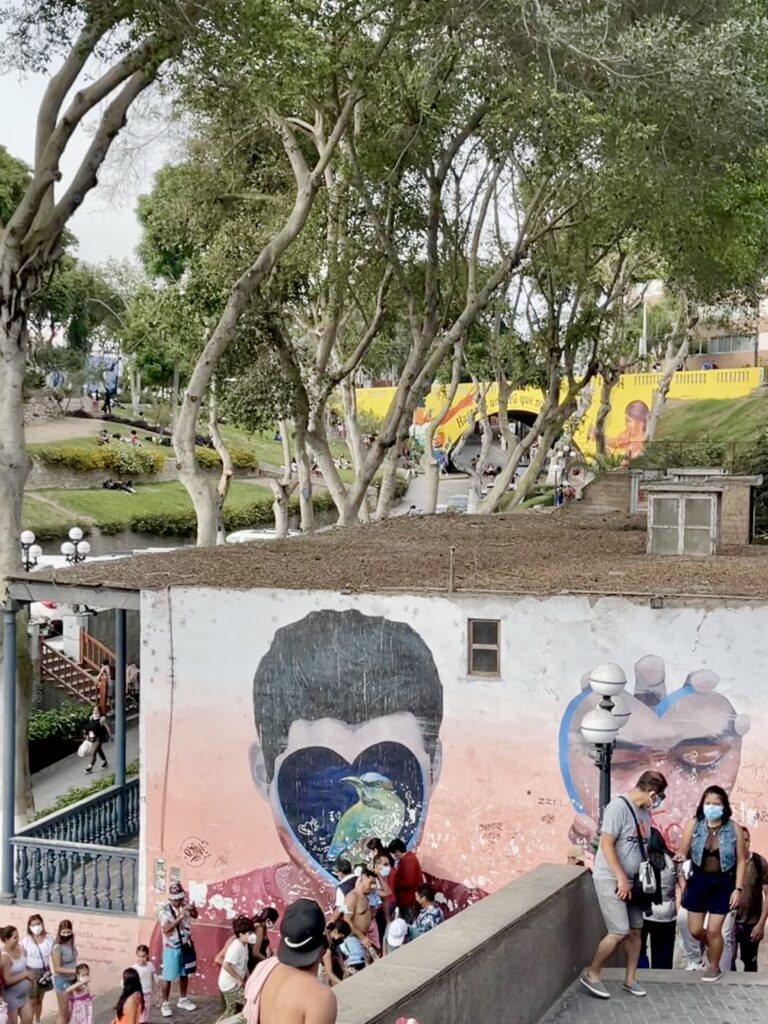
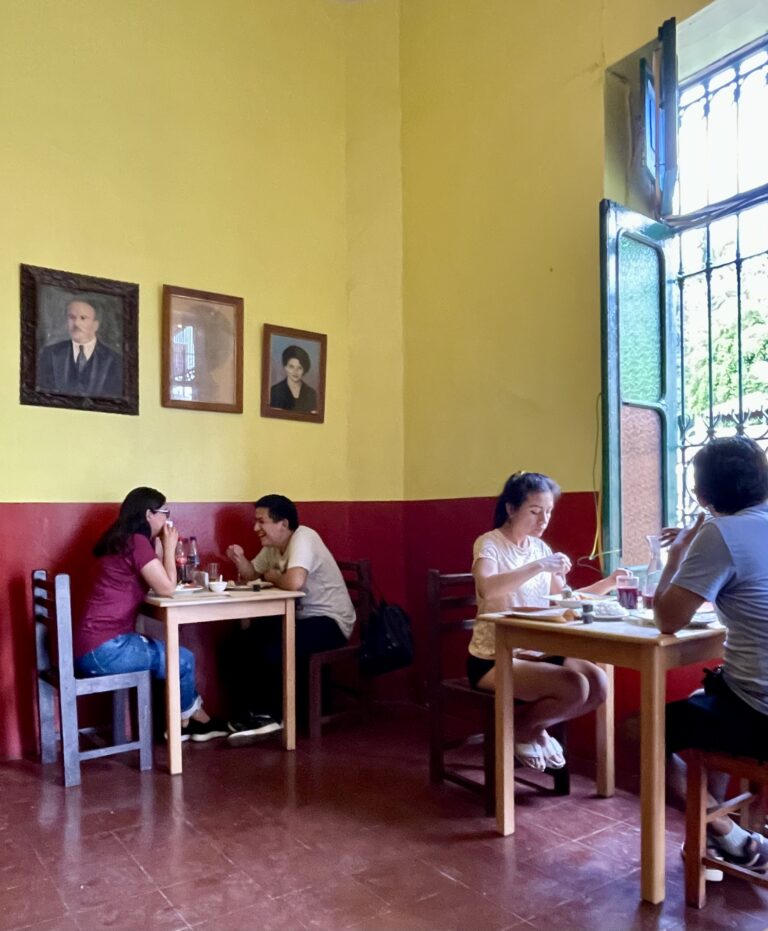
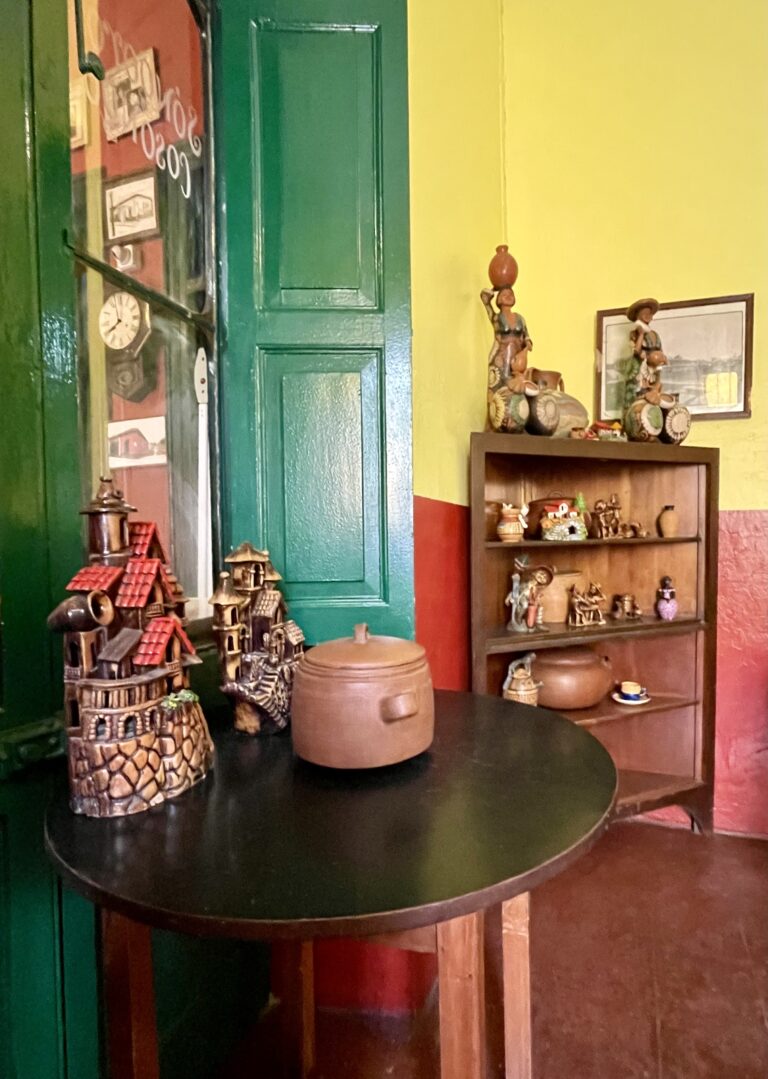
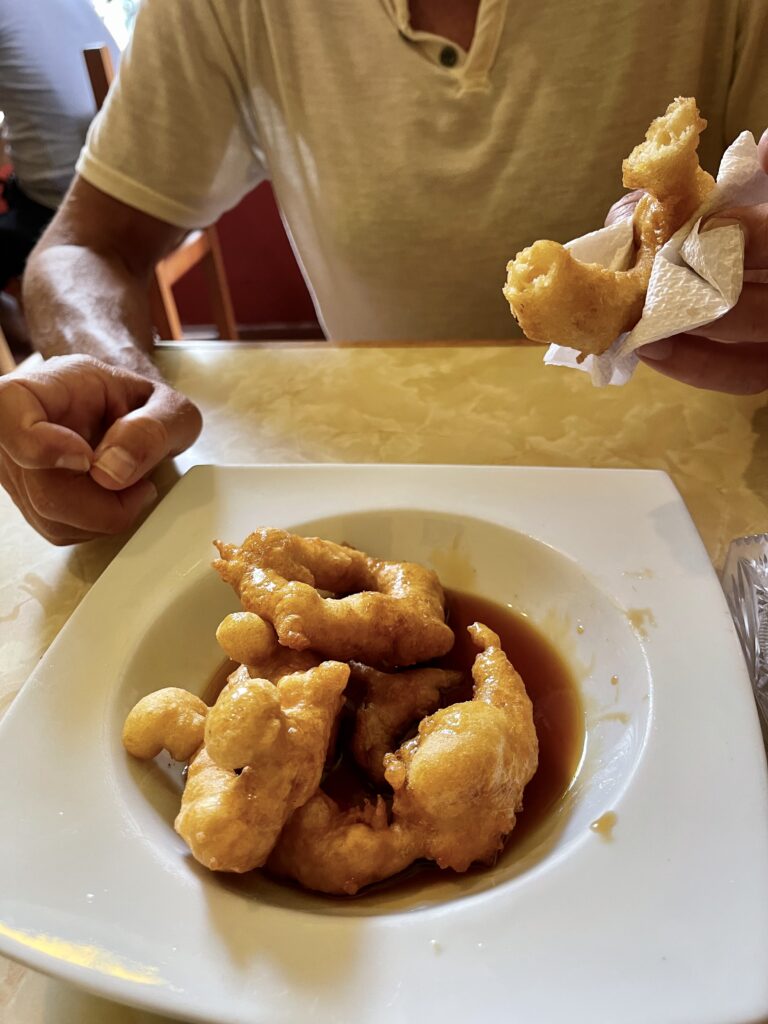
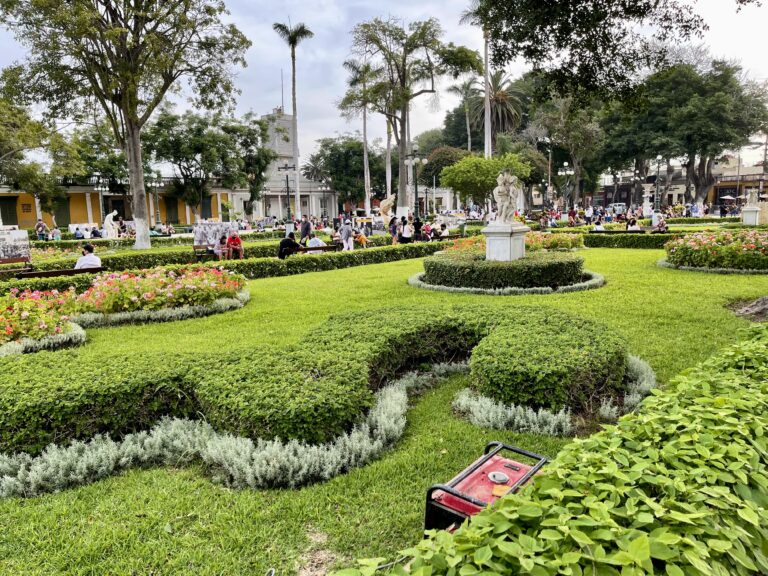
One Response
Nice murals, great food, beautiful ocean views. Plus Susan got her wings! Thanks for keeping us posted.